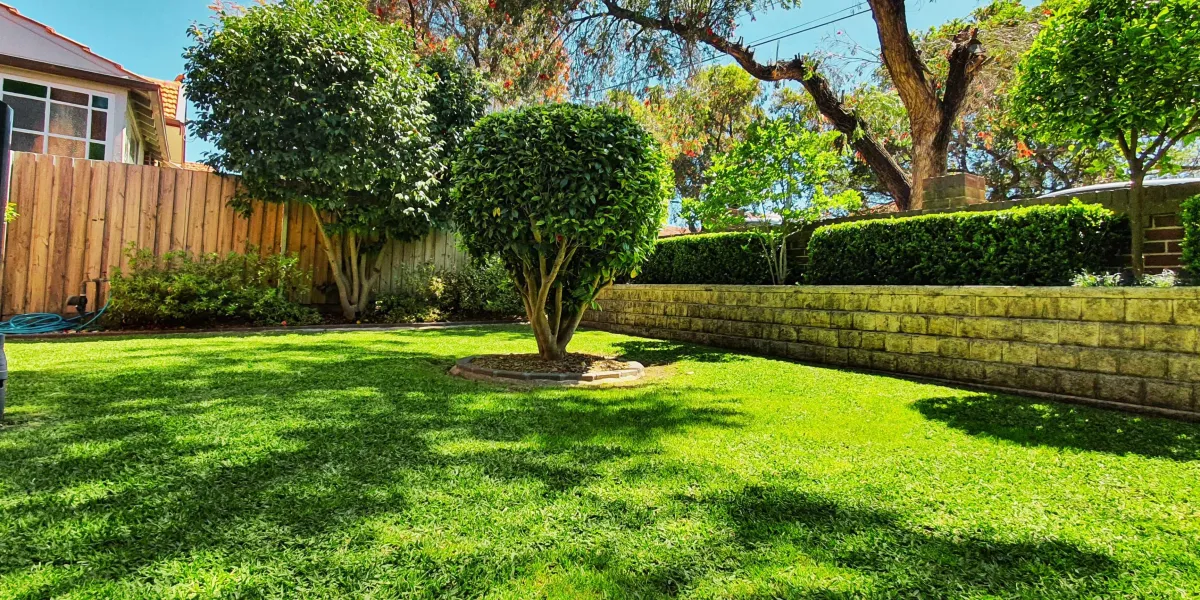
This Simple Trick Will Make Your Lawn the Envy of the Neighborhood
Before diving into our secret lawn trick, it’s important to understand why proper garden maintenance is key to a thriving lawn. A well-maintained lawn doesn’t just look good; it provides a solid foundation for other plants in your garden, enhances curb appeal, and even increases property value. However, achieving that perfect lawn requires more than occasional mowing and watering. Regular care, thoughtful maintenance, and understanding the needs of your grass type are all vital for success.
The Secret Trick to a Green Lawn: Aeration
So, what’s the simple trick we’ve been talking about? Lawn aeration. If you’ve never heard of this technique, it’s one of the most effective ways to rejuvenate your lawn and improve its overall health.
What is Lawn Aeration?
Aeration involves perforating the soil with small holes to allow air, water, and nutrients to penetrate the grass roots. Over time, lawns can become compacted, especially in areas with heavy foot traffic or clay-like soil. When the soil is compacted, it limits root growth, which makes it harder for your grass to absorb the water and nutrients it needs.
By aerating your lawn, you’re essentially giving the grass room to grow deeper and stronger roots. This results in a more resilient lawn that can better tolerate drought, pests, and diseases. Not only does aeration improve soil health, but it also encourages faster recovery from damage and helps maintain a greener, healthier lawn all year long.
How to Aerate Your Lawn:
Choose the Right Time: The best time to aerate your lawn is during the growing season, either in the spring or early fall. This allows the grass to recover and fill in the holes made by the aeration process.
Select the Right Tool: You can either use a manual or powered aerator. If you have a small lawn, a manual aerator should suffice. For larger lawns, you might want to rent or purchase a mechanical aerator that covers more ground quickly.
Aerate in Multiple Directions: For optimal results, aerate in at least two directions (north-south and east-west) to ensure the soil is sufficiently perforated.
Water Well After Aerating: After aeration, water your lawn thoroughly. This helps the soil to settle, and the holes you’ve made will fill with water, giving the roots a boost.
Apply Fertilizer: After aeration is the perfect time to apply lawn fertilizer. The holes allow the nutrients to penetrate deeper into the soil, providing essential nourishment for the grass.
Lawn Fertilizer: The Key to a Healthy Lawn
Speaking of fertilizer, let’s dive into one of the most important elements of garden maintenance: lawn fertilizer. Fertilizing your lawn isn’t just about making it look lush and green—it’s also about providing the grass with the right nutrients to thrive.
Why is Lawn Fertilizer Important?
Your grass needs several key nutrients to grow healthy, including nitrogen (N), phosphorus (P), and potassium (K). Nitrogen helps grass grow tall and green, phosphorus supports root development, and potassium helps the plant withstand stress, including disease, drought, and extreme temperatures.
Using the right lawn fertilizer at the right time ensures that your lawn gets the nutrients it needs to stay healthy throughout the year. Here’s what you need to know about fertilizing:
Types of Fertilizer: There are two main types of fertilizers: organic and synthetic. Organic fertilizers, like compost or manure, release nutrients slowly over time and improve soil health. Synthetic fertilizers, on the other hand, provide quick-release nutrients but can potentially damage your soil if overused.
When to Fertilize: Timing is everything when it comes to fertilizing. Early spring and fall are typically the best times to fertilize, as these are periods of active growth for most grass types.
How Much to Apply: Over-fertilizing can burn your grass and lead to nutrient imbalances in the soil. Follow the manufacturer’s instructions carefully, and never apply more than recommended.
Fertilizer with Weed Control: Many lawn fertilizers also come with built-in weed control. If you struggle with pesky weeds, a slow-release fertilizer with weed preventer can help reduce their growth while nourishing your grass.
Additional Garden Maintenance Tips for a Perfect Lawn
While aeration and fertilizer are essential, your lawn will thrive even more with consistent garden maintenance. Here are a few additional tips to ensure you achieve the perfect lawn:
1. Mow Your Lawn Properly
One of the easiest ways to maintain your lawn’s health is through proper mowing. Avoid cutting the grass too short, as this stresses the grass and allows weeds to take over. Aim to mow at a height of around 3 inches, which allows grass to grow thicker and healthier. Make sure to use a sharp mower blade to ensure a clean cut that doesn’t damage the grass.
2. Water Smartly
Watering your lawn properly is crucial for maintaining its health. Water deeply and less frequently rather than shallow watering every day. Deep watering encourages the roots to grow deeper, which helps your grass survive periods of drought. Early morning is the best time to water your lawn to prevent fungal growth.
3. Mulch and Leave Clippings
Mulching your grass clippings back into your lawn after mowing can help provide nutrients to your lawn naturally. Grass clippings decompose quickly and return nitrogen, phosphorus, and potassium to the soil.
4. Control Weeds and Pests
Weeds and pests can quickly destroy a beautiful lawn. Regularly inspect your lawn for signs of trouble, and apply weed killer or pest control products as needed. Additionally, keep your lawn’s soil healthy by using the right lawn fertilizer, which will help your grass outcompete weeds for nutrients.


